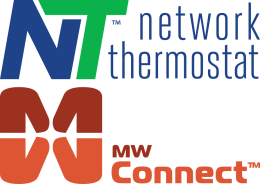
Air conditioning in schools can be a significant expense. Maintaining a comfortable temperature and healthy air quality is important for the well-being of staff and students. It’s important for schools to find ways to accomplish their goals for ventilation and comfort while keeping energy expenses in check.
In this blog post, we will discuss some tips for better air quality and more energy-efficient school air conditioning systems.
Improving Indoor Air Quality in Schools
Poor indoor air quality in schools can lead to health problems such as allergies, asthma, and other respiratory illnesses, which can have a significant impact on student performance. Air conditioning systems can affect air quality, especially if they are not well maintained or if they are outdated. Here are some tips for improving indoor air quality in schools:
Proper Maintenance of School Air Conditioning
A poorly maintained air conditioning system can have a significant impact on air quality by circulating and distributing contaminated air throughout a building or room. Over time, air filters within the system can become clogged with dust, dirt, and other pollutants, which can compromise the unit's efficiency and allow contaminants to enter the air supply.
Filters should be changed regularly, and the system should be inspected by a professional to ensure that it is functioning correctly.
Use Thermostats with Sensors
Using thermostats with sensors is an effective way to improve air quality in schools. These sensors can monitor the temperature, humidity, and air quality in a room and help adjust the HVAC system accordingly to maintain optimal air quality levels. Additionally, the use of programmable thermostats can help schools save energy and reduce their carbon footprint, which can have a positive impact on expenses and the environment.
CO2 Monitoring in Schools
Carbon dioxide monitors can help schools identify areas where air quality is poor and take steps to improve it. Poor ventilation is a common cause of high CO2 levels, as it can lead to a buildup of stale air in a space.
High levels of CO2 can lead to drowsiness, headaches, and a general feeling of discomfort, which can negatively impact productivity and cognitive function. By monitoring CO2 levels in schools, building managers can ensure that the ventilation system is functioning correctly and that fresh air is being circulated into the space.
HVAC and Energy Efficiency in Schools
Energy costs can be a significant expense for schools, especially during peak cooling and heating seasons. However, efficient air conditioning systems can help schools save money on energy costs. Here are some tips for improving energy efficiency in school air conditioning systems:
Use Smart[er] Thermostats
Smart[er] Thermostats with Internet control can provide much more control over energy expenditure while maintaining comfort levels. They can be programmed to adjust temperature settings based on occupancy and usage patterns, reducing energy consumption.
Maintain the System Regularly
Regular maintenance of air conditioning systems can help ensure that they are functioning efficiently and thus avoid costly repairs in the future. HVAC systems that are not properly maintained can become clogged with dirt and debris, which can lead to higher energy bills by restricting airflow and causing the system to work harder to achieve the desired temperature.
Upgrade Outdated Systems
Outdated air conditioning systems may not be energy-efficient and can be costly to maintain. Upgrading to a newer system that includes remote sensors and other features can improve energy efficiency and reduce energy costs. Go here for more information on energy efficiency in schools.
When to Upgrade a School Air Conditioning System
Schools should consider upgrading their air conditioning system if it is outdated, inefficient, or costly to maintain. A newer system can provide better indoor air quality, energy efficiency, and cost savings. The benefits of a newer system may include remote sensors, programmable thermostats, and other features that can improve energy efficiency and air quality. Make sure the new system is installed correctly and maintained regularly to ensure that it lasts a long time and runs well.
Smart[er] Thermostats to Use in Air Conditioning Systems for Schools
One of the most effective ways to improve energy efficiency in school air conditioning systems is to use Smart[er] Thermostats. Smart[er] Thermostats by NetX can help schools save money on energy costs by providing real-time data on energy usage and enabling remote control of temperature settings. It can also provide alerts if there are any issues with the system, allowing for quick resolution of problems. For help with product selection,contact our team in the link below.



